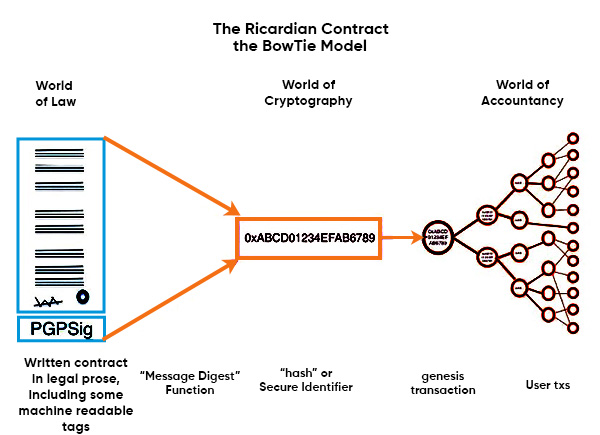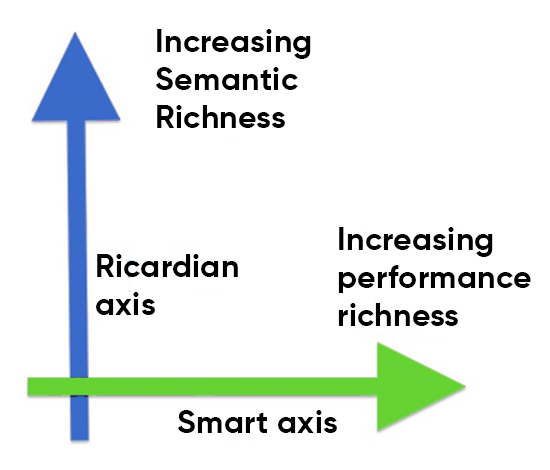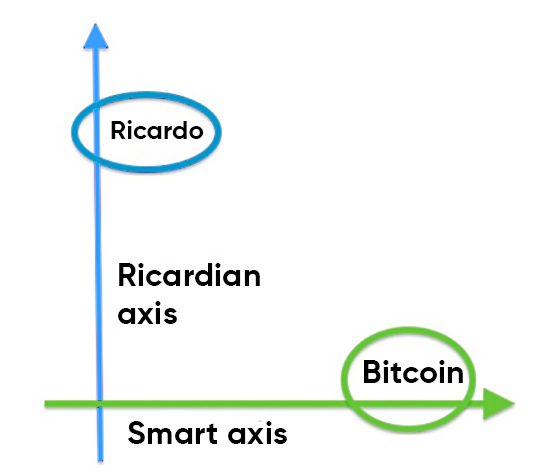
- Blockchain - Home
- Blockchain - Introduction
- History of Blockchain
- Blockchain - Technology
- Blockchain and Cryptography
- Blockchain Beyond Crypto
- Blockchain - Advanced Concepts
- Blockchain - Decentralization
- Blockchain - D-Apps
- Blockchain - DeFi
- Blockchain - Future Scope
- Smart Contracts in Blockchain
- Blockchain - Ricardian Contracts
- Blockchain - Oracles
- Blockchain - DAO
- Bitcoin
- Bitcoin - Invisible Gold
- How Bitcoin Works?
- Bitcoin - Network
- Bitcoin - Wallets
- Bitcoin - Innovations
- Ethereum
- Ethereum Alternate Cryptocurrency
- Ethereum Ecosystem
- Ethereum Virtual Machine
- Advanced Ethereum
- Ethereum Wallets
- Ethereum Miner Nodes
- Miscellaneous
- Blockchain - Double Spending
- Public Key Cryptography
- Blockchain - Hashing
- Bitcoin - Mining
- Blockchain - Chaining Blocks
- Blockchain - Proof of Work
- Blockchain - Network & Mining
- Blockchain - Incentives to Miners
- Blockchain - Merkle Tree
- Blockchain - Payment Verification
- Blockchain - Resolving Conflicts
- Blockchain - Privacy
- Bitcoin - Mitigating Attacks
- Blockchain - Conclusion
Blockchain - Ricardian Contracts
Ricardian contracts were first introduced in Ian Grigg's paper, "Financial Cryptography in 7 Layers," during the late 1990s. These contracts were originally implemented in a bond trading and payment system known as Ricardo.
The core concept of a Ricardian contract is to create a document that is comprehensible and recognized by both legal authorities and computer systems. They tackle the problem of value issuance on the internet, by clearly identifying the issuer and detailing all terms and conditions within a document, thereby ensuring its validity as a legally enforceable contract.
Features of Ricardian Contracts
A Ricardian contract is characterized by several key features −
- It is a contract presented by an issuer to its holders.
- It represents a valuable entitlement for holders, overseen by the issuer.
- It is designed for easy comprehension by individuals (similar to a traditional paper contract).
- It is structured for programmatic readability (parsable, akin to a database).
- It includes a digital signature.
- It contains keys and server details.
- It is associated with a distinct and secure identifier.
Ricardian Contracts - Bowtie Model
In practice, the execution of contracts involves the creation of a single document that encapsulates the contractual terms in legal language along with the necessary machine-readable tags. This document is digitally signed by the issuer utilizing their private key.
Subsequently, it undergoes hashing through a message digest function, generating a unique hash that serves as an identifier for the document. This hash is then utilized and signed by the involved parties during the contract's execution, linking each transaction to the identifier hash, thereby providing evidence of intent.
This process is illustrated in the accompanying diagram, commonly referred to as a Bowtie Model.

The diagram includes several components, which are explained in the following section −
- The World of Law is depicted on the left side, indicating the origin of the document. This document is a legally written contract accompanied by machine-readable tags.
- Following this, the document is hashed.
- The resulting message digest acts as an identifier within the World of Accountancy.
Ricardian Contracts - World of Accountancy
The World of Accountancy encompasses all accounting, trading, and information systems utilized in business operations. The concept behind this flow is that the message digest produced from hashing the document is initially employed in a genesis transaction, or the first transaction.
After this, it serves as an identifier for all transactions throughout the contract's operational execution. This establishes a secure connection between the original written contract and each transaction within the World of Accountancy.
Ricardian Contracts - Types of Semantics
The semantics of a Ricardian Contract can be categorized into two distinct types −
Operational Semantics
These refer to the actual execution, correctness, and safety of the contract, while denotational semantics focuses on the real-world implications of the entire contract. Some scholars have drawn a distinction between smart contract code and smart legal contracts, suggesting that a smart contract primarily addresses the execution aspect of the agreement.
Denotational Semantics
These semantics encompasses both the denotational and operational aspects of a legal agreement. While it may be logical to classify smart contracts based on these semantic differences, it is more advantageous to view a smart contract as an independent entity capable of encapsulating both legal language and code (business logic).
Ricardian Contract Vs. Smart Contracts
A Ricardian contract differs from a smart contract in that the latter does not involve any formal contract, and is primarily focused on executing the terms of the agreement. In contrast, a Ricardian contract emphasizes the creation of a document that incorporates legal language and semantic depth.

This distinction is clearly illustrated in the following section −
| Feature | Ricardian Contract | Smart Contract |
|---|---|---|
| Focus | Human-readable and understandable legal document | Automatic execution and enforcement of contract terms |
| Strength | Clear communication of contract terms, serves as legal record | Efficient and reliable performance of contractual obligations |
| Representation | Combination of natural language (prose), computer-readable code, and parameters | Code written in a specific programming language |

Let us take an example of Bitcoin Technology.
In the context of Bitcoin, one can observe a basic implementation of smart contracts that utilize conditional logic, which is solely aimed at the execution and fulfillment of the contract.
Conversely, a Ricardian contract is designed to produce a document that is comprehensible to humans while also containing elements that can be interpreted by computer programs.